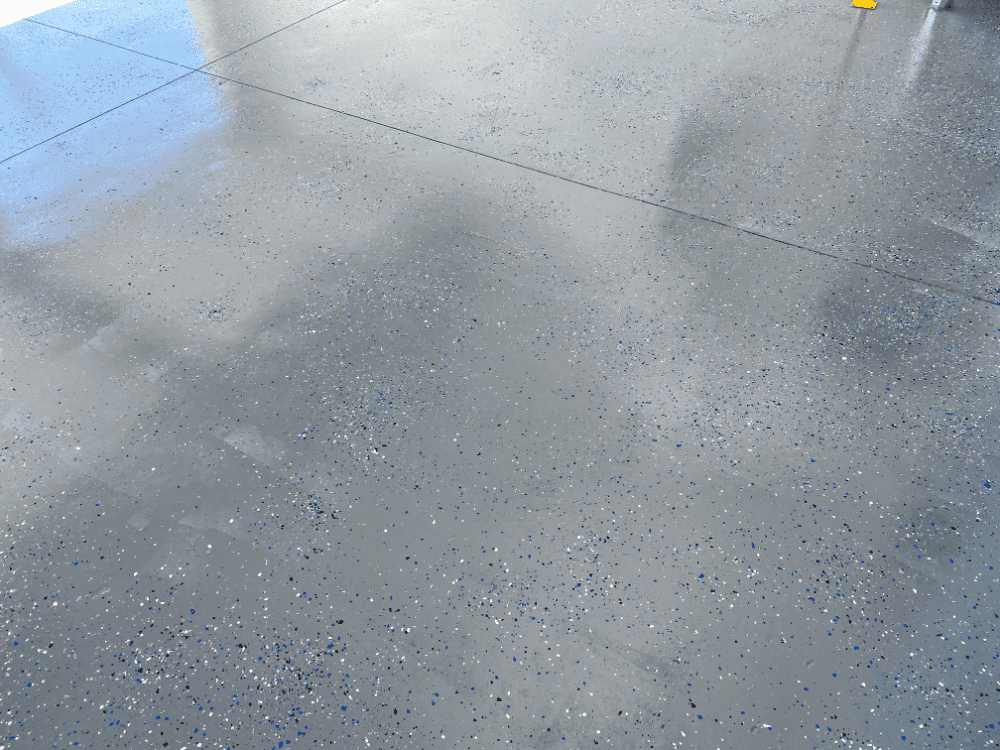Concrete floors are suitable for lots of spaces, both indoors and outdoors. Some people dislike them as they feel concrete is too plain or too hard but the reality is that concrete can be finished in various ways, quite a few of which are outright gorgeous.
So, if you’re planning a concrete flooring project what are the finish options you might want to look at? If we delve deep into the nitty-gritty of it all we can list dozens of different types and subtypes but there really are 9 main types of concrete floor finishes – here’s what makes each of them special.
9 types of concrete floor finishes
Each of the different types of concrete floor finishes has something to offer depending on the situation. Let’s start with the most basic type and work our way toward the more special and even extravagant ones.
1. Basic troweled concrete finish
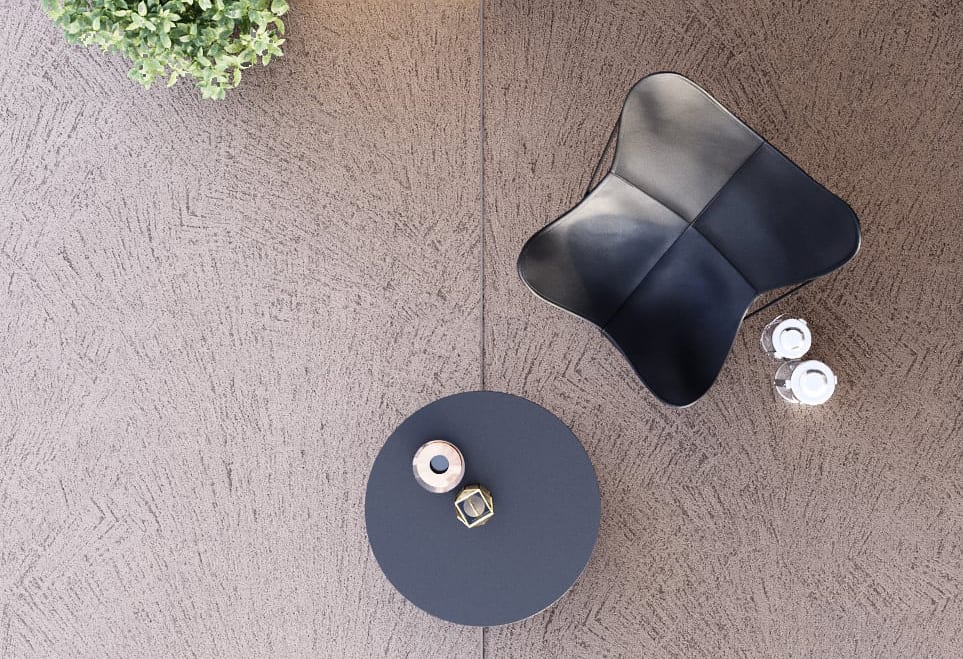
The trowel finish can be mistaken for unfinished concrete but that isn’t the case. For this finish, trowels are used after the concrete has been smoothed over with a screed but before it has solidified. All that’s needed is for a standard hand-held trowel to be passed over the concrete surface, usually in the circular back and front motions.
With enough skill, a troweled finish can look very well and it can have different looks too, not just the expected “wavy” design. Still, a troweled finish is meant to be simple, quick to make, and practical more so than anything else. Another benefit is that it’s quite slip-resistant as it’s purposefully made not to be all that smooth.
Again, the skill of the worker does matter a lot, however, as an unskilled hand can make trowel-finished concrete very uneven. A power trowel can also be used, usually for projects with greater square footage.
2. Broom brushed concrete finish
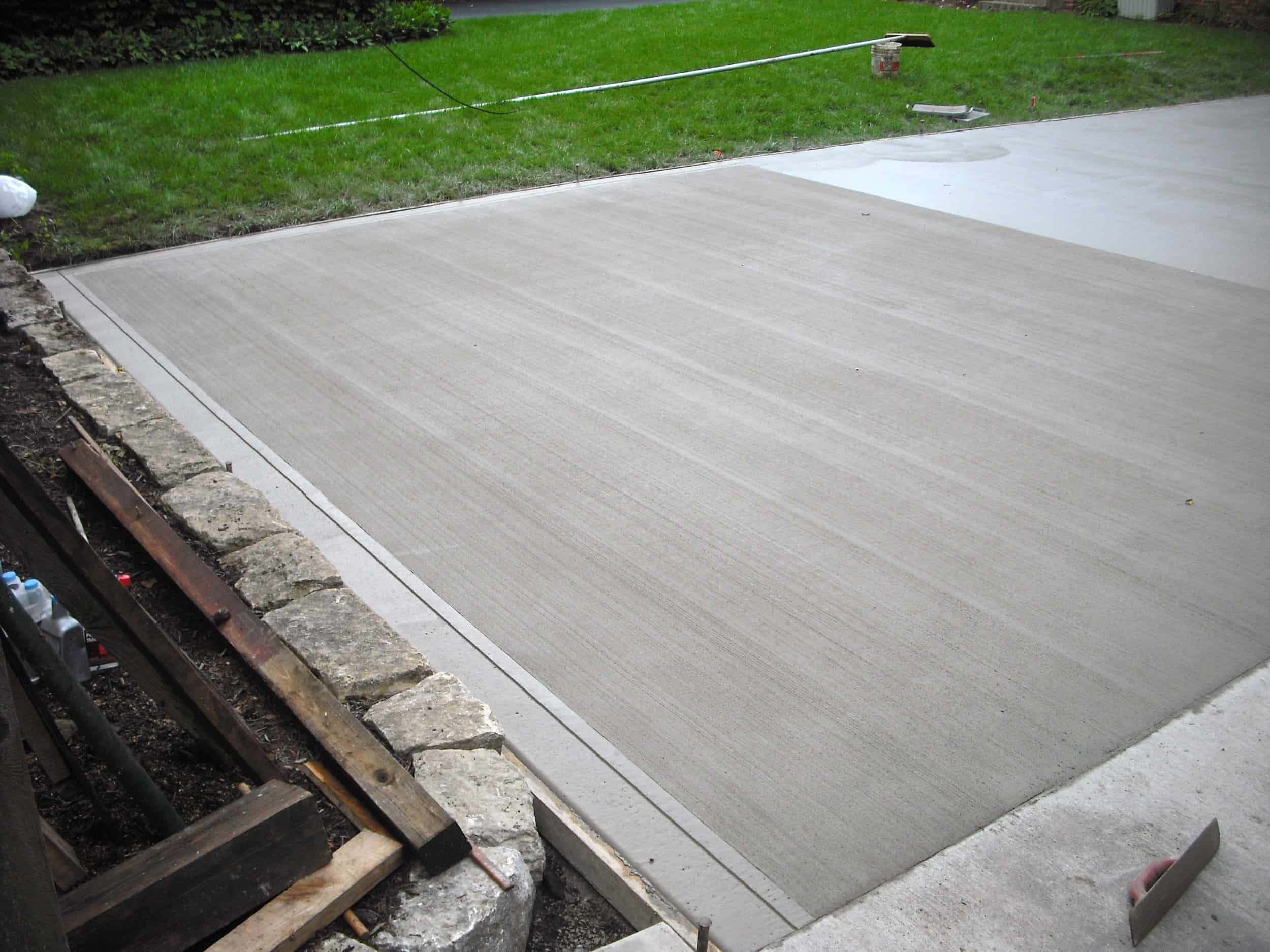
A type of finish that often follows the trowel is the broom-brushed concrete finish. In this case, a specialized broom is dragged over the troweled concrete surface to give it an even more coarse look. This is great for outdoor purposes as it makes the concrete even less slippery. It’s also a good choice for certain indoor places such as bathrooms, pool floors, and so on for the same reason.
The exact look of the broom finish can differ too, depending on the exact type of the broom or brush, the length and coarseness of its bristles, and the skill of the worker.
3. Swirl concrete finish
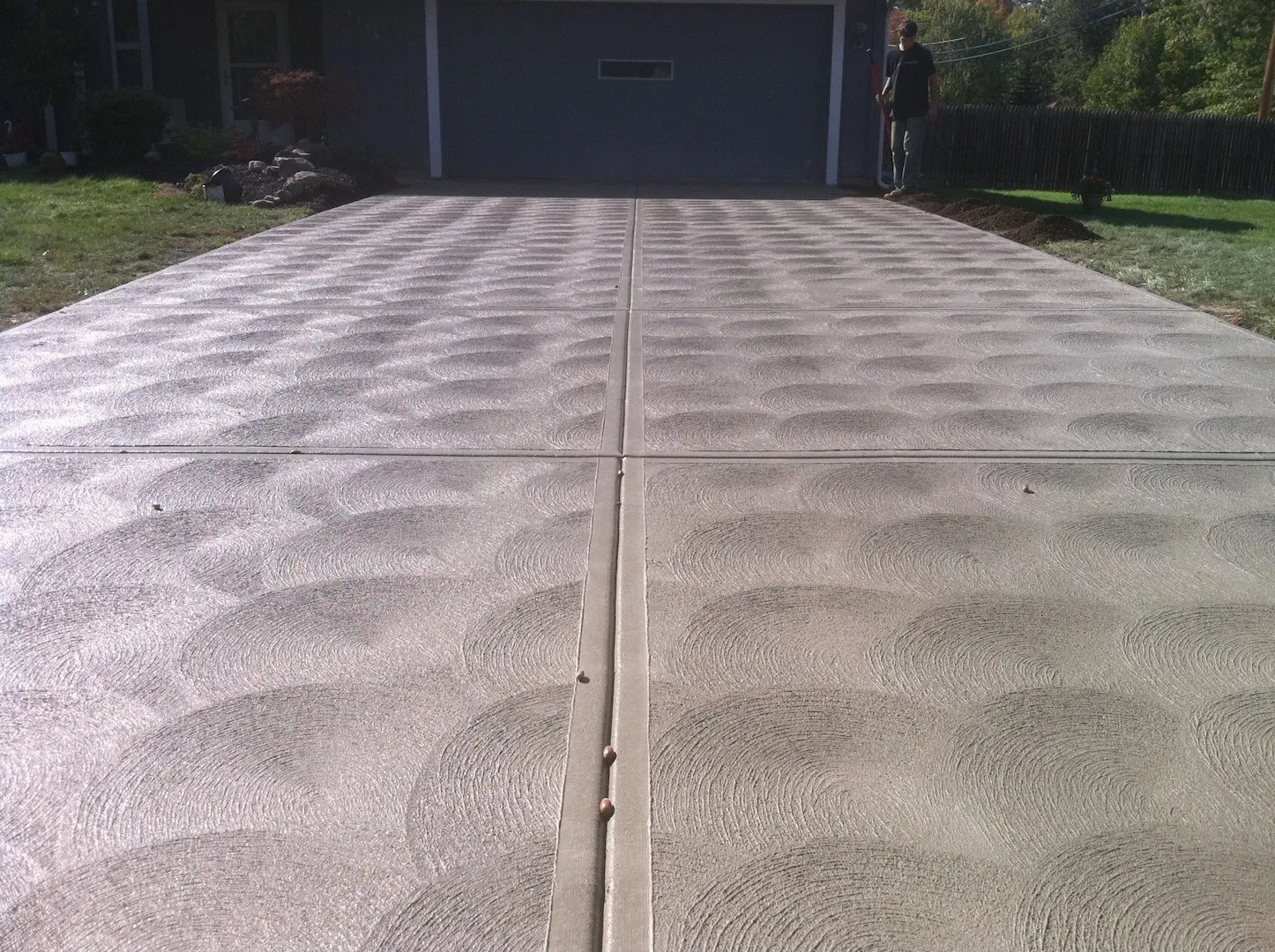
This finish can be seen as a variation of the troweled finish but it isn’t done with the same tool nor does it look the same. Here, the surface of smoothed over with circular overlays. This is one of the simpler types of concrete floors and it’s mostly done outdoors as it’s rarely seen as “fancy enough” for indoor purposes.
Swirled concrete does look great, however, especially considering how easy it is to make – it’s only slightly more time-consuming than the troweled finish. It’s also about as slip-resistant and safe to walk on when wet.
4. Salt concrete finish
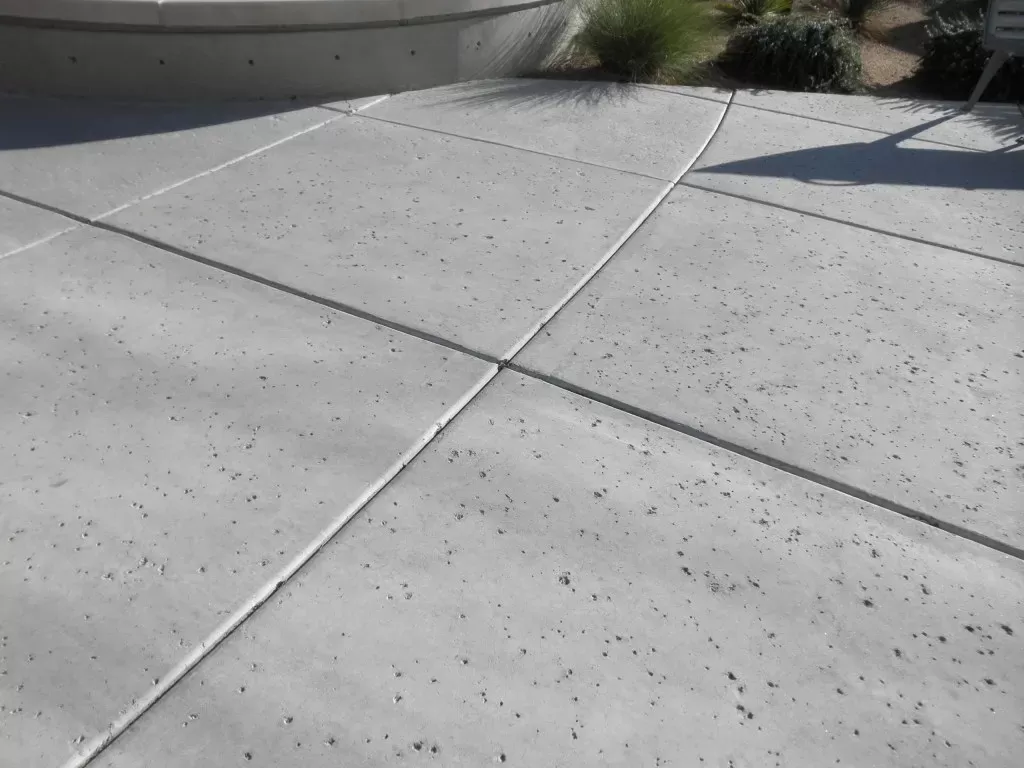
A salt finish for concrete can sound like something that wouldn’t last long but that’s not the case. On the contrary, a salt finish’s very purpose is to help concrete last longer in wet environments – either in bathrooms or around pools, or outdoors if the climate is generally rainy.
The finish is done by sprinkling coarse rock salt on the surface of wet concrete before it has solidified. After that, much of the salt is rinsed and leaves a textured surface behind it. Naturally, this also gives concrete enhanced anti-slip properties.
This finish does make concrete more prone to cracking in colder climates, however, so it isn’t suitable for every environment. Also, it can be done on top of other finishes such as the brushed concrete finish.
5. Stamped concrete finish
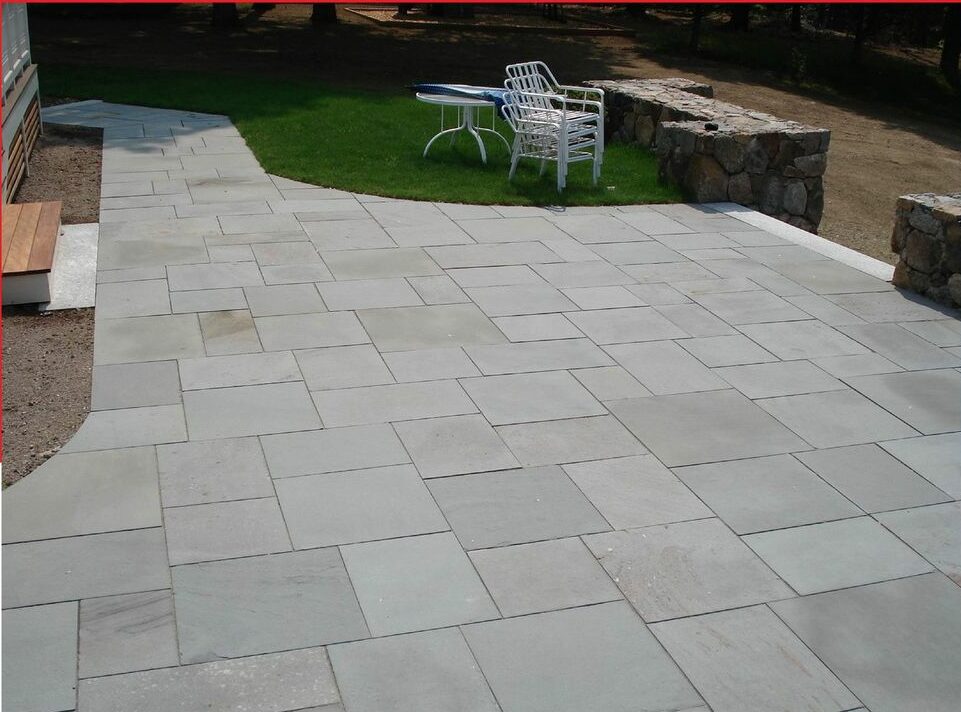
Onto a unique and stylized finish, stamped concrete is where things start getting artier. Concrete stamping is done exactly as you would expect – before the cement has had time to dry up, a decorative stamp is lightly pressed to its surface. The exact texture of these stamps can vary greatly and it can help the concrete look like anything – a brick, stone, wood, or even an actual painting.
Stamped concrete works especially well with the colored concrete finish we’ll discuss further below. This way, what could have been a plain concrete floor can turn into literal art.
6. Polished concrete finish
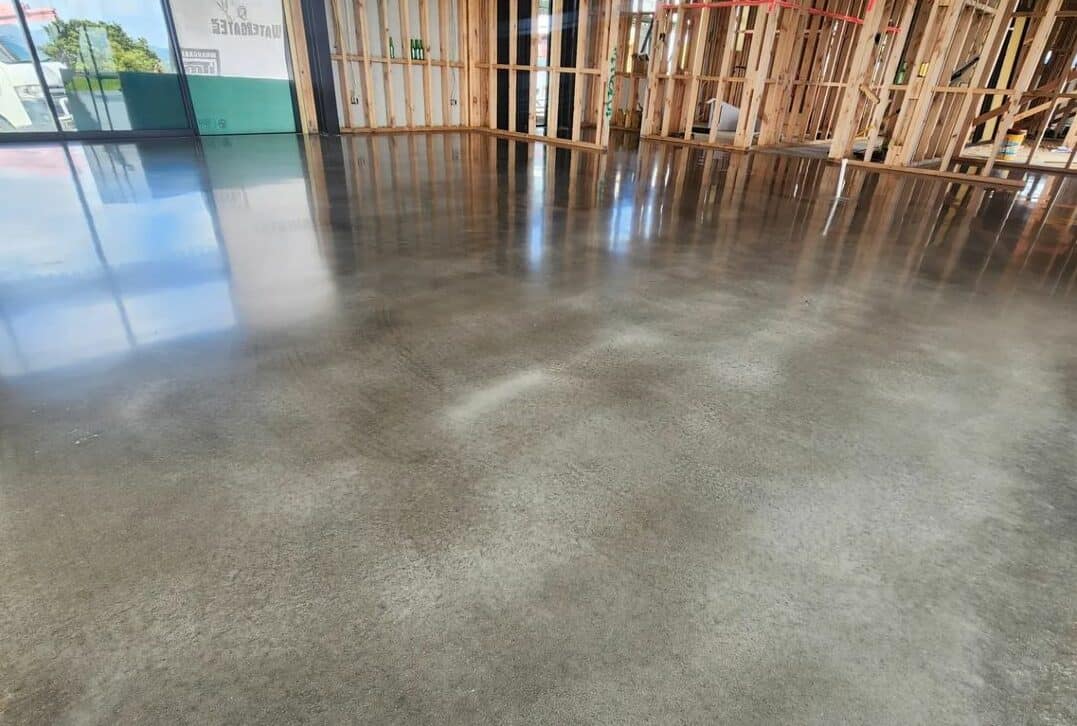
The opposite of the several finishes above, a polished concrete floor can be as smooth as glass. This polishing is done using grinding tools armed with fine diamond abrasives. Typically, the cured concrete first needs to be “cut” with rougher abrasives that then get switched with finer and finer ones until the floor gets as smooth as possible.
This type of finish is great for a lot of indoor purposes – from entrance hallways to banket halls. Chemical hardeners are also usually added to the surface near the end of the polishing which improves the floor’s durability. The concrete can also be sealed for further protection as well as for an even better look.
7. Exposed aggregate concrete finish
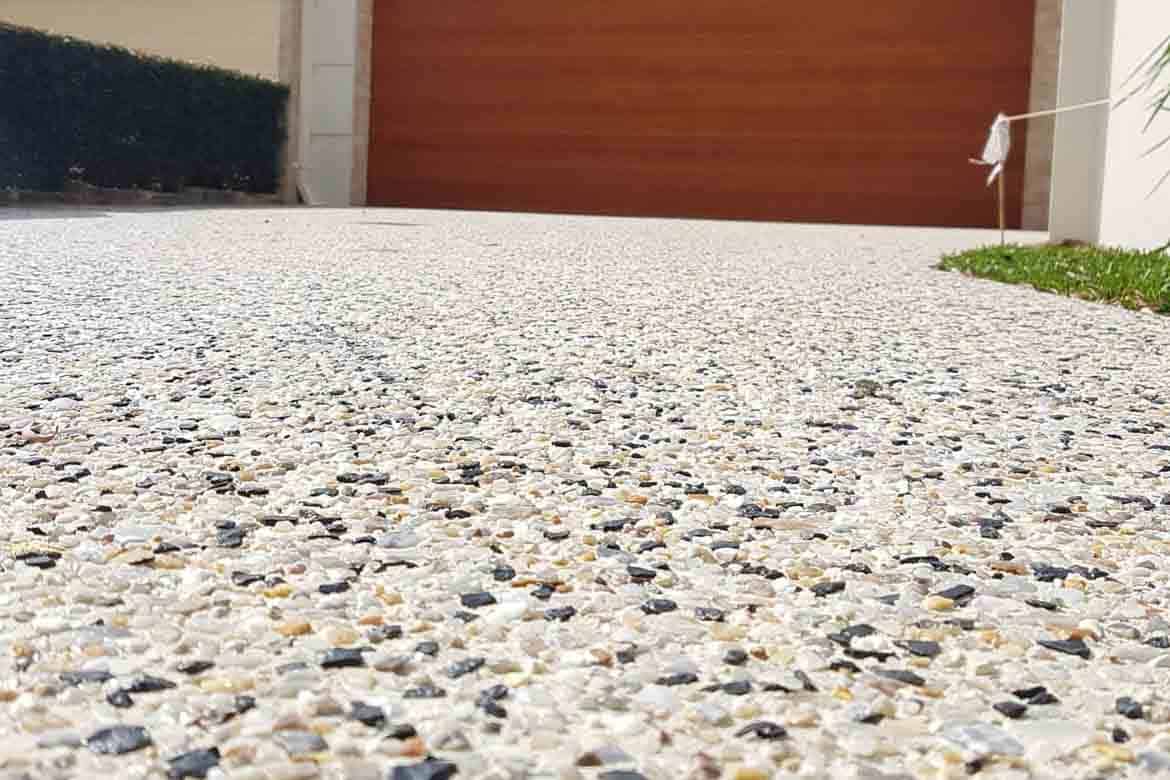
This type of finish is often seen outdoors on patios, driveways, and parking areas but can be employed indoors too. For an exposed aggregate finish, the concrete’s aggregates – small stones, glass, sea shells, granite, and others – are ground back and laid on top of the concrete base. This is done to be as aesthetically pleasing as possible and it also gives the concrete a very textured surface with great traction.
Once the aggregate and the concrete beneath it are properly laid out and leveled, chemicals are employed to make sure that the whole thing sets properly. The chemical reaction is a form of polishing and it makes this finish more durable as well as pretty.
It should be noted that, because of its nature and texture, this finish isn’t as durable as some of the others – it can last a long time but small parts of it can be prone to chipping off. Additionally, the quality of the workmanship is crucial for the longevity of the concrete so you need to make sure you’ve hired the right people for the job.
8. Colored concrete finish
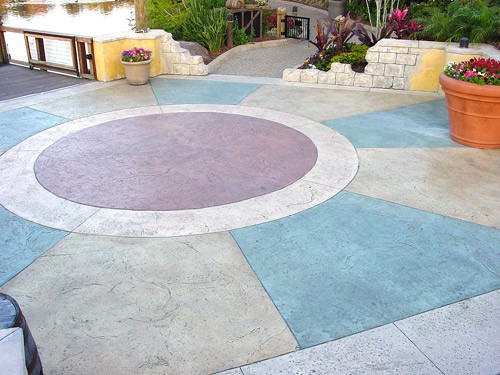
A colored finish on a concrete slab is a great way to make the floor look as vibrant and eye-catching as possible, especially in combination with a stamped concrete finish. This coloring can be done in various ways, depending on how exactly the pigment or color dye has been added to the mixture. Here are the four main methods:
- Stained concrete – this method is most often done in conjunction with concrete stamping. Here, the concrete’s surface is smoothed and cured, and a color dye is added to its top layer. Such concrete stains can be acid-based stains or water-based stains, depending on the type of chemicals poured over the concrete slabs. This is a great way to rejuvenate old concrete but works even better on new concrete floors.
- Integral coloration – instead of only staining the top of the concrete, this method adds pigments to the whole thing. To do that, the workers must add the color pigments to the mixture before they’ve even laid it on the ground. This way, the color becomes uniform throughout the entire concrete mass, not just its top layer.
- Color hardener – this is another very durable option that also works great with concrete stamping. Color hardeners are only added to the top layer but their colors are typically much more vibrant. What’s more, the end product is much more durable, especially when it comes to de-icing chemicals and moisture.
- Standard dyeing – this method results in the brightest possible colors but it’s not as durable as using a color hardener. This is alright for indoor purposes, however, as there the concrete should still be durable enough. It’s also wise to always get a mock-up from your contractor to see the colors first – with this method even more so than with the others.
9. Epoxy concrete finish
Concrete epoxy floors are can be done in many ways and are as gorgeous as they are durable. This makes them perfect for high-traffic areas as well as for any other environment.
The epoxy finish is seen as the most durable type of concrete finish as epoxy coatings are made by simply pouring the epoxy mixture – made of adhesives, plastics, and polymers – on top of the concrete tile. This epoxy can come in all kinds of looks too – metallic epoxy, glass-like epoxy, and so on.
Either way, any high-traffic flooring will look great with the right epoxy finish and will comfortably last for decades if maintained well.
In conclusion
As you can see, the surface of the concrete really doesn’t need to be as plain to look at as many people think. Depending on where the flooring is and what you want from it, you can go with various styles, many of which look so different that the untrained eye might not even recognize all of them as concrete.
